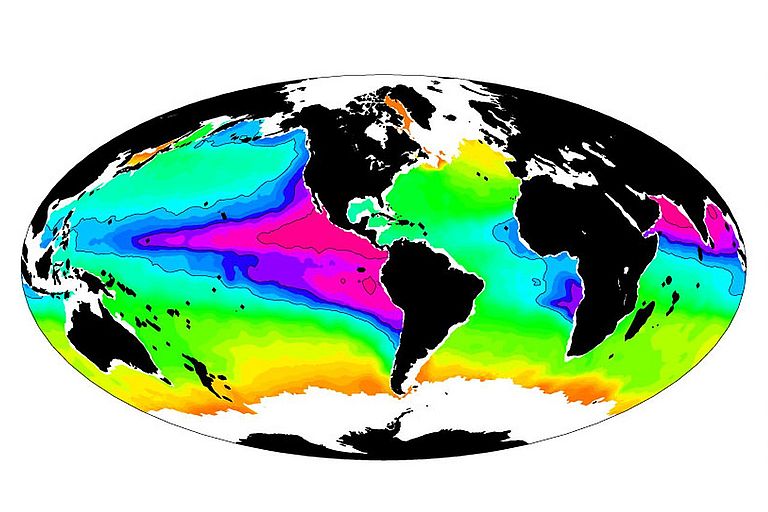How the ocean loses nitrogen
Marine Scientists from Bremen and Kiel (Germany) identify key factor that control nitrogen availability in the Ocean
How does the current warming of the atmosphere affect the ocean? Do changes in the ocean also have an impact on the atmosphere and thus on human beings? Answering these fundamental questions is one of the central aims of current ocean research. Scientists are investigating multiple biological and chemical processes involved in the exchange of gases and other compounds between ocean and atmosphere. One of the most important of these processes is the nitrogen cycle because nitrogen is a limiting nutrient for life in the seas.
The intensity of this exchange differs strongly from one region to another. Up to 40 percent of global oceanic nitrogen loss occurs in so-called oxygen minimum zones (OMZ), areas with low to non-measurable oxygen concentrations. Microorganisms with an anaerobic metabolism transform fixed nitrogen into free nitrogen gas, which is then emitted into the atmosphere. “Only if we understand these processes very well are we also able to model how environmental changes affect the nitrogen cycle and consequently the distribution of nutrients in the ocean“, Professor Andreas Oschlies from the GEOMAR Helmholtz Centre for Ocean Research Kiel explains. Oschlies is co-author of a study recently published online in the renowned scientific journal Nature Geoscience. Scientists from the Max Planck Institute for Marine Microbiology, from GEOMAR and from the Institute for General Microbiology of Kiel University therein present the most comprehensive nitrogen budget for an oceanic oxygen minimum zone so far. The lead author is Tim Kalvelage from the MPI in Bremen.
The study is based on several scientific cruises funded by the Collaborative Research Center 754 in the years 2008 und 2009 in the South Pacific Ocean off the coast of Peru, where the world’s largest oxygen minimum zone is situated. During the cruises the scientists took water samples and afterwards analyzed them in the laboratories of the participating institutions. The results provide a detailed overview of nutrient distributions, rates of nitrogen loss processes, as well as abundances and the identity of bacteria in the South Pacific oxygen minimum zone. Furthermore, models were employed to calculate the amount of algal biomass that is exported from the surface to the deeper OMZ waters.
The results surprised the authors. Among other findings they observed a correlation between the rates of nitrogen loss and the amount of exported organic matter. Furthermore, specialized bacteria, which unlike other bacteria do not transform organic material but its degradation products Ammonium und Carbon dioxide into nitrogen gas, seem to play an important role.
“This research is fundamental for the current biogeochemical models to work because so far our models cannot reliably reproduce the patterns of nitrogen loss that we measure“, Professor Oschlies stresses. He adds: “Eventually it helps us to better assess the distribution of nutrients in the whole ocean, telling us a lot about the way how the ocean will respond to increasing CO2 concentrations in the atmosphere “
You can find a detailed press release on the webpages of the MPI Bremen.
Reference
Kalvelage, T, G. Lavik, P. Lam, S. Contreras, L. Arteaga, C. R. Löscher, A. Oschlies, A. Paulmier, L. Stramma and M. M. M. Kuypers: Nitrogen cycling driven by organic matter export in the South Pacific oxygen minimum zone. Nature Geoscience http://dx.doi.org/10.1038/NGEO1739
Contacts at GEOMAR
Prof. Dr. Andreas Oschlies (GEOMAR, RD2-Biogeochemical Modeling), aoschlies(at)geomar.de
Jan Steffen (GEOMAR; Communication and Media), +49 431 – 600 2811, jsteffen(at)geomar.de





